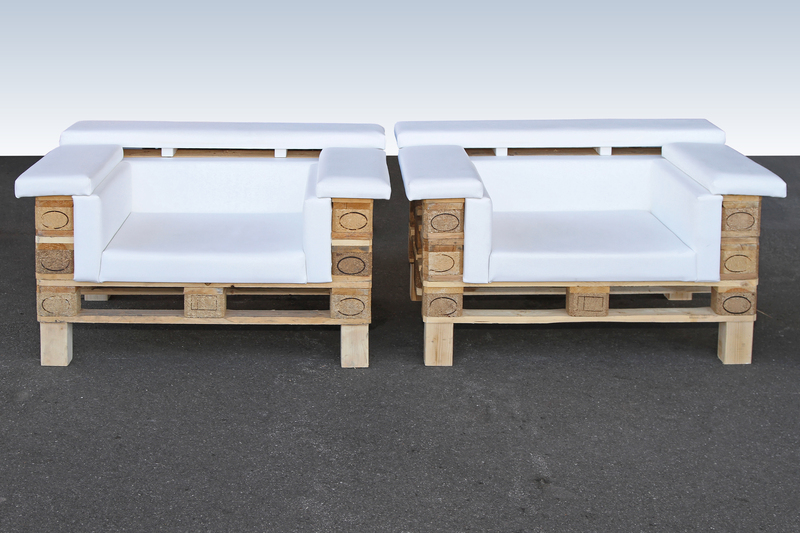Tips for Disposing of Pots and Pans Without Harming the Environment
Many of us have a neglected stack of old cookware in our kitchens--battered nonstick skillets, warped stainless steel pots, faded enamel pans, or damaged cast iron. When it's finally time to part ways, it's crucial to do so responsibly. Disposing of pots and pans without harming the environment requires thoughtful choices to avoid unnecessary landfill waste and environmental harm. In this guide, we cover effective, eco-friendly ways to handle unwanted cookware, with practical tips and actionable steps for households of all sizes.
Why Eco-Friendly Cookware Disposal Matters
Cookware can be made from a wide variety of materials including aluminum, cast iron, stainless steel, nonstick coatings, and ceramic. Many of these materials do not biodegrade or can pollute the environment if not properly disposed of. Furthermore, damaged nonstick pans may contain perfluorinated chemicals (PFAS), which are harmful to the environment and human health. By choosing sustainable methods for discarding old cookware, you help reduce landfill burden and conserve valuable resources.
Key Environmental Issues With Traditional Disposal
- Landfill waste: Cookware can sit in landfills for generations without breaking down.
- Resource consumption: Every pot or pan that avoids disposal saves raw materials and the energy used to manufacture new products.
- Chemical pollution: Nonstick coatings can release toxins as they break down in landfill conditions.
- Missed recycling opportunities: Metals are infinitely recyclable but often end up wasted when disposed of incorrectly.

Assessing Whether to Dispose, Reuse, or Repair
Before you say goodbye to your trusted saucepans or frying pans, consider alternatives: can your cookware be repurposed or repaired instead of discarded? You might be surprised at how a little creativity or elbow grease gives new life to old pots and pans and helps the environment.
Repair and Refurbishment
- Re-season cast iron: Many rusty cast iron pans can be restored with a steel wool scrub and seasoning in the oven.
- Replace handles or lids: If your pan is still functional but has lost a handle or knob, check if replacements are available.
- De-stain and polish: Stainless steel or copper cookware often just needs a deep clean to look new again.
Creative Reuse at Home
- Planters: Turn cracked pots into unique planters for herbs or flowers.
- Storage: Use old pans for storing kitchen utensils, garden tools, or craft supplies.
- Art projects: Upcycle pans into decorative wall clocks, bird feeders, or quirky garden art.
Remember: Repurposing keeps materials out of landfills and adds character to your home or workspace!
Best Practices for Recycling Cookware
Recycling is one of the most environmentally friendly solutions for disposing of old pots and pans. Because most cookware is made primarily of metal, it can often have a second life when recycled correctly. Here's how you can ensure your items don't end up as waste:
Understanding Material Types
- Stainless Steel and Aluminum: Most recycling centers accept these metals. Remove any plastic or wooden handles beforehand, if possible.
- Cast Iron: Exceptionally recyclable but heavy, so contact your local center for guidelines.
- Copper or Brass: Some centers separate these valuable metals for special recycling streams.
- Nonstick Pans: Pans with PTFE (Teflon) coating may not be accepted by all facilities; call ahead to ask about their policy.
- Ceramic and Glass: These are generally not recycled with metals, but some centers or specialty programs may accept them.
How to Prepare Pots and Pans for Recycling
- Clean the cookware: Wash off food residue and grease to avoid contamination in the recycling stream.
- Disassemble when possible: Remove non-metal parts like plastic handles or glass lids.
- Check your local rules: Each recycling program varies; always confirm material acceptance and any specific preparation needed.
- Deliver to scrap metal centers: Many scrap yards and recycling centers accept pots and pans as "mixed metal." Some may even pay for certain materials!
- Participate in manufacturer take-back programs: Some brands offer recycling or trade-in programs for their cookware.
Did you know? Recycling metals consumes up to 95% less energy than making new products from raw ore! By recycling your cookware, you help cut emissions and save resources.
Sustainable Disposal Through Donation
Another wonderful way to avoid environmental harm and help your community is to donate unwanted pots and pans that are still usable. Donation increases the lifespan of cookware and keeps them circulating in the community rather than in a landfill.
Best Places to Donate Old Cookware
- Charity thrift stores (Goodwill, Salvation Army, local equivalents)
- Homeless shelters and food kitchens
- Refugee resettlement agencies supporting new arrivals to your community
- Churches or social clubs running household-item drives
- Online reuse groups (Freecycle, Buy Nothing Project, Facebook Marketplace)
Tip: Only donate items that are clean, functional, and safe to use. Avoid donating pans with flaking or heavily scratched nonstick surfaces, as these may pose health risks.
Specialty Donation and Buyback Programs
- Cookware brands: Companies like Calphalon, Le Creuset, and others occasionally run trade-in programs where you can return old cookware for recycling or credit.
- Local arts centers or schools: Craft programs may appreciate donations of metal pans for creative projects or classroom use.
Disposing of Damaged or Unsafe Cookware
Some pans, especially those with flaking nonstick coatings or cracked ceramic, are unsafe for use or donation. For these, responsible disposal is key.
Safe Disposal Steps
- Identify hazardous materials: Pans with older nonstick coatings (manufactured before 2015) may contain harmful PFOA or other chemicals. Refer to the manufacturer's website for guidance.
- Consult hazardous waste guidelines: Some communities require special disposal for PFOA cookware; check with your local waste management authority.
- Never incinerate or trash: Burning or dumping hazardous cookware can release toxic fumes and leach chemicals into the environment.
- Wrap and label: If disposal with household waste is required (always a last resort), wrap the item securely, label it as "do not recycle" and "contains nonstick chemicals," and avoid placing it in recycling bins.
Choosing Eco-Friendly Cookware in the Future
The cycle of responsible pot and pan disposal also includes smart purchasing. If it's time to upgrade, consider selecting environmentally friendly, longer-lasting cookware to reduce future waste.
Sustainable Cookware Choices
- Cast iron: Lasts generations, easily recycled, and can be restored repeatedly.
- Stainless steel: Highly durable and 100% recyclable.
- Uncoated aluminum: Fully recyclable, though not always suitable for acidic foods.
- Ceramic (lead-free): Durable for years with proper care.
- Avoid cheap nonstick: Inexpensive, low-quality nonstick pans wear out quickly, increasing replacement waste and chemical pollution.
Pro tip: When investing in new items, choose products backed by strong warranties and companies with cookware recycling initiatives.

Key Takeaways: Environmentally Friendly Ways to Dispose of Cookware
- Repair and reuse your pots and pans whenever possible to extend their lifespan and reduce waste.
- Recycle metal cookware at specialized scrap yards or recycling centers--always check local guidelines first.
- Donate usable cookware to charities, shelters, or creative organizations.
- Dispose of hazardous materials responsibly, following all safety recommendations if your pans contain old nonstick coatings.
- Buy sustainably in the future to minimize disposal needs down the road.
Frequently Asked Questions (FAQs)
-
Can I put pots and pans in my curbside recycling bin?
No. Most municipal recycling programs do not accept cookware in curbside bins due to their size, shape, and mixed materials. Bring them to a scrap metal or household hazardous waste facility instead. -
Are nonstick pans recyclable?
Only sometimes--and only if the facility accepts them. Always remove plastic handles, and dispose of pans with heavily damaged coatings as hazardous waste, not recycling. -
What if my pans are completely unusable?
Check for scrap metal centers, or dispose of them through a city-approved waste route, wrapped and labeled as described above. -
Is it better to upcycle or recycle?
Both are great, but upcycling has the edge as it extends product life, uses zero energy, and reduces demand for new resources! -
How do I find cookware recycling options near me?
Search online for "scrap metal recycling near me," contact your city's public works department, or check Earth911.com for nearby facilities.
Conclusion: Make an Environmental Impact With Conscious Cookware Disposal
Disposing of old pots and pans doesn't have to be a burden on the planet. By reusing, recycling, donating, or responsibly discarding your cookware, you make a direct impact on reducing waste and protecting the environment. Encourage friends and family to adopt these simple practices, and together, let's minimize kitchen waste and build a more sustainable home.
If you have additional ideas, creative projects, or questions about eco-friendly disposal of cookware, please share them in the comments below! Together, we can build a cleaner, greener future--one pan at a time.
